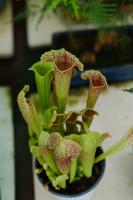How would you calculate the water potential in plant cells?
Water potential is an essential feature of plant cells that describes the amount of free energy present in the system. It is a measure of the force that drives the movement of water in a system, including plant cells. Water moves from regions of high water potential to regions of low water potential. There are several ways in which you can calculate the water potential in plant cells.
Factors Affecting Water potential:
Water potential in plant cells can be influenced by various factors, including the solute concentration or osmotic pressure, hydrostatic pressure and pressure potential, and gravity. The solute concentration or osmotic pressure is one of the most critical factors that contributes to the water potential of a plant cell. The more solutes present in the solution, the lower the water potential, and the less likely water molecules are to move into the cell. In contrast, hydrostatic pressure and pressure potential refer to the physical force exerted by water molecules pushing against the cell wall or other elements of their environment.
Solute Potential:
One of the most common ways to calculate the water potential in plant cells is through the solute potential formula. The solute potential is a measure of the effect of solutes on the water potential of a plant cell. It is calculated using the formula Ψs = -iCRT, where i is the ionization constant, C is the molar concentration of the solute, R is the universal gas constant, and T is the temperature in Kelvin. The solute potential is always negative because solutes decrease water potential. Therefore, the more concentrated the solute solution, the more negative the solute potential.
Pressure Potential:
The pressure potential in plant cells is another critical component to consider when measuring the water potential. It is the amount of pressure that is exerted by the cell's contents, such as the cytoplasm, vacuoles, or other cell organelles. Pressure potential can be estimated using a pressure probe. A plant cell in a hypotonic solution (lower solute concentration) has a high pressure potential, whereas a cell in a hypertonic solution (higher solute concentration) has a lower pressure potential.
Matric Potential:
Matric potential is another component of the water potential in plant cells that can be measured. It is the force that is generated by the adhesion of water molecules to cell walls, soil particles, or any other surface in the environment. This potential can be measured using a tensiometer, which measures the force required to overcome the adhesion of water molecules to the surface in question. The more tightly water molecules are bound to a surface, the lower the matric potential.
Total Water Potential:
The total water potential of a plant cell is the sum of its solute, pressure, and matric potential. The formula for the total water potential in plant cells is Ψ = Ψs + Ψp + Ψm. The total water potential determines the direction of water movement into or out of a plant cell. Water will move from regions of high water potential to regions of low water potential, meaning that if the total water potential outside a plant cell is higher than that inside, water will move out of the cell, causing it to shrink. In contrast, if the total water potential inside the cell is higher than outside, water will move into the cell, causing it to swell.
Conclusion:
In conclusion, the calculation of water potential in plant cells is a complex process that requires careful consideration of multiple factors, including solute concentration, pressure, and adhesion. Measuring each of these components separately and then combining them to obtain the total water potential is important to understand how water moves in and out of plant cells. Understanding the water potential in plant cells is key to understanding how water and nutrients are transported and distributed throughout the plant.

 how many times do yo...
how many times do yo... how many planted tre...
how many planted tre... how many pine trees ...
how many pine trees ... how many pecan trees...
how many pecan trees... how many plants comp...
how many plants comp... how many plants can ...
how many plants can ... how many plants and ...
how many plants and ... how many pepper plan...
how many pepper plan...




























